
01
Ornamental Grasses: Planting and Care Guide
02
Ornamental Grasses and Landscape Design
03
Native Ornamental Grasses
04
Exotic Ornamental Grasses for the Landscape
Ornamental grasses can add so much visual interest to a landscape, without being too showy and competing with your flowers. We particularly love tall grasses that flutter in the wind, adding some movement and a little drama to the landscape. Container arrangements look really avant-garde with some tall spikes of ornamental grasses in the center, with shorter, more colorful flowers and foliage plants all around the base. To find out how to plant and care for ornamental grasses and help you decide which kind of grass plants suit your landscape design, we’ve put together this guide to ornamental grasses for St. John gardeners.
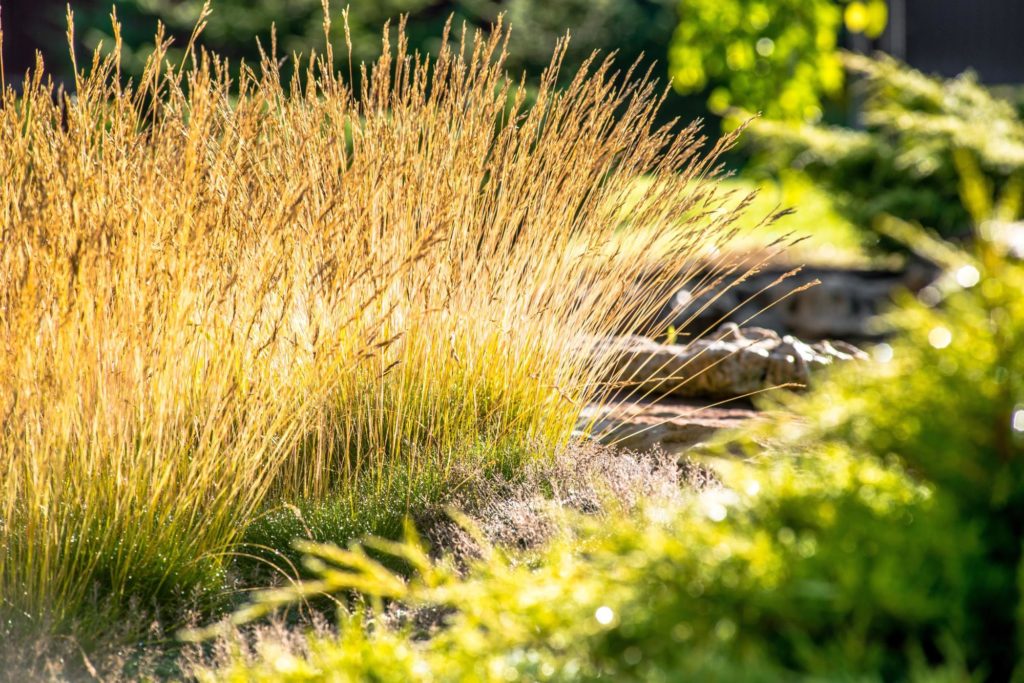
Ornamental Grasses: Planting and Care Guide
Generally, ornamental grasses like well-draining soil. Because their roots are shallow, new plants need regular watering during the first season. However, once established, ornamental grasses are fairly drought tolerant. Deeply watering them occasionally is much better than frequent, light watering. Most ornamental grasses do best in direct sunlight, and while some can tolerate a bit of partial shade, they usually grow best with lots of sunshine. Overall, they really aren’t that temperamental to care for— especially native ornamental grasses that grow naturally here in St. John.
Interestingly, they do often perform well in poorer soils— so much so, that ultra-rich soils can sometimes lead to poor growth in certain varieties. If you’re looking to fill in an area of your yard with less-than-ideal soil conditions, ornamental grasses make a great, easy landscape addition.
For some perennial ornamental grasses, you may find that as they get older, the blades in the center of the mound start to turn yellow and die off— to avoid this, it’s good to separate your grasses at the root and redistribute them in the garden every few years. Not only will dividing your grasses help them to thrive, you’ll have more plants for your garden–for free! Divide warm-season grasses in spring through mid-summer and cool-season grasses in spring or early fall. It’s best to divide them when they are actively growing–but not flowering–so that they’ll established good root systems when transplanted.
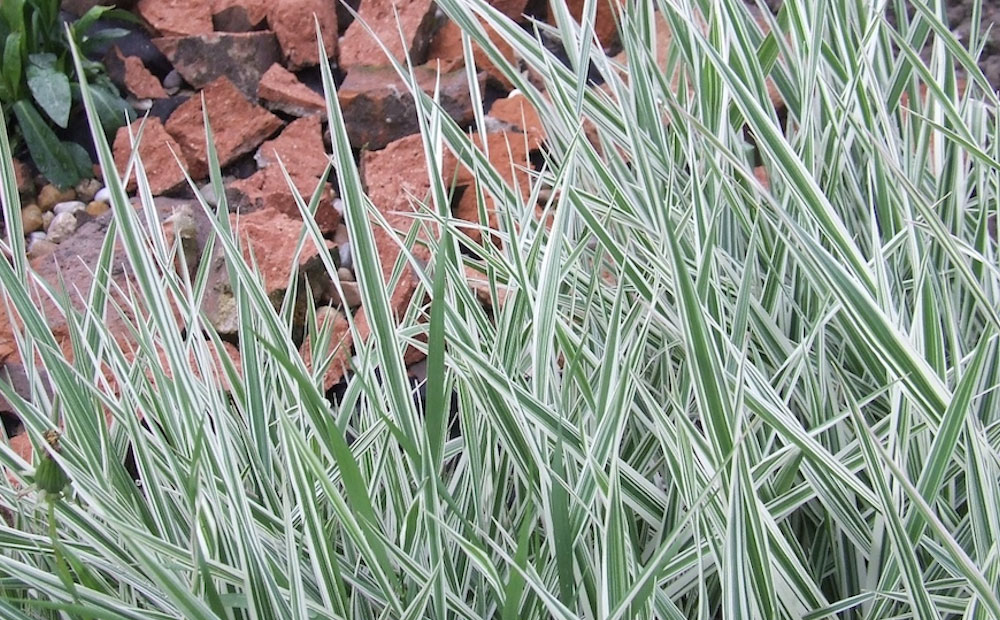
Ornamental Grasses and Landscape Design
Something to keep in mind about choosing ornamental grasses is that some can grow more aggressively than others. If you’re hoping to add a little bit of accent grass to a corner of a smaller garden, it wouldn’t be the best idea to choose a fast-growing tall grass that spreads and overwhelms your other plants. Those types are better suited to larger landscapes as accents along fences or around water features.
There are lots of other grasses that are more compact and don’t spread as vigorously that would do well blended in with other plants. Just do a little research on the growth habits of your grass before planting.
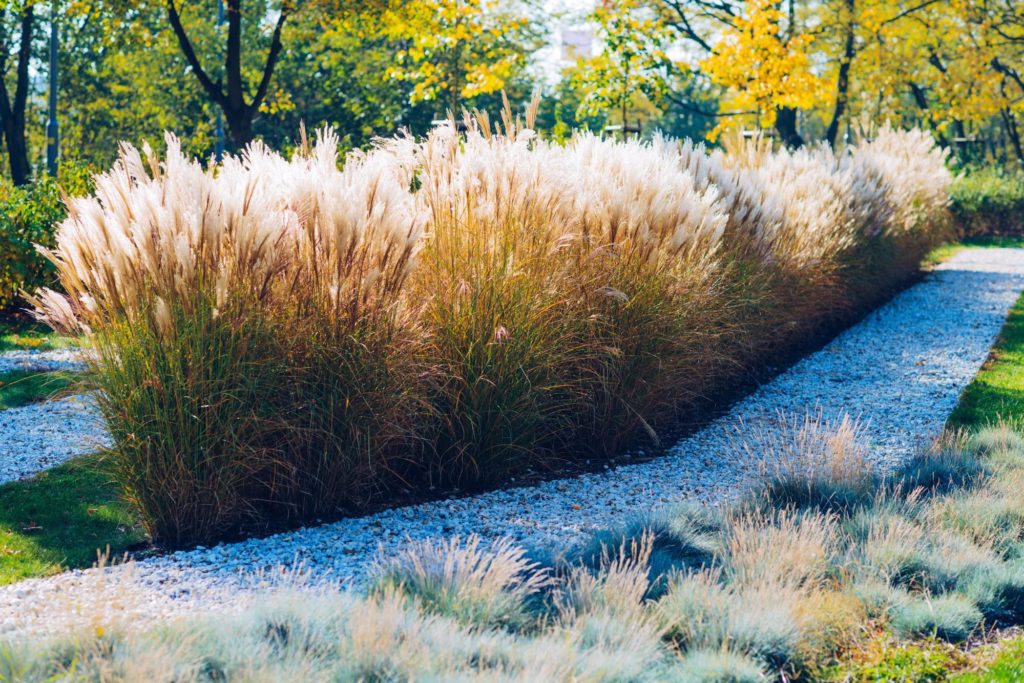
Native Ornamental Grasses
Native species are always reliable ornamental plants to care for, since they’ve already adapted to live here naturally. Here are our favorite ornamental grasses that grow wild here in St. John:
- Switch Grass: This leafy green grass has subtle wheat-like flower spikes with tiny reddish-green buds, usually growing from 3-6 feet tall. It stands mostly upright, not spilling over quite as much as fountain grasses.
- Big Bluestem: Reaching up to 6 feet tall, this native ornamental grass does best with lots of space, as it tends to be a vigorous grower. Its blades are green and change to purple in autumn, and when it blooms it produces sleek tan-colored teretes. While it naturally stands fairly straight, it is a bit wispier and tends to flutter in our gusty Illinois winds.
- Blue Fescue: This cool-toned ornamental grass has a lovely growth habit that is more controlled and mounded, with the blades spilling outward like a fountain, rather than spreading spaced out and scattered. Single “bushes” of blue fescue look fabulous in the garden among a sea of flowers and contrasting foliage, whereas several plantings of blue fescue clustered together can look almost fantastical, like a sea of teal pompoms.
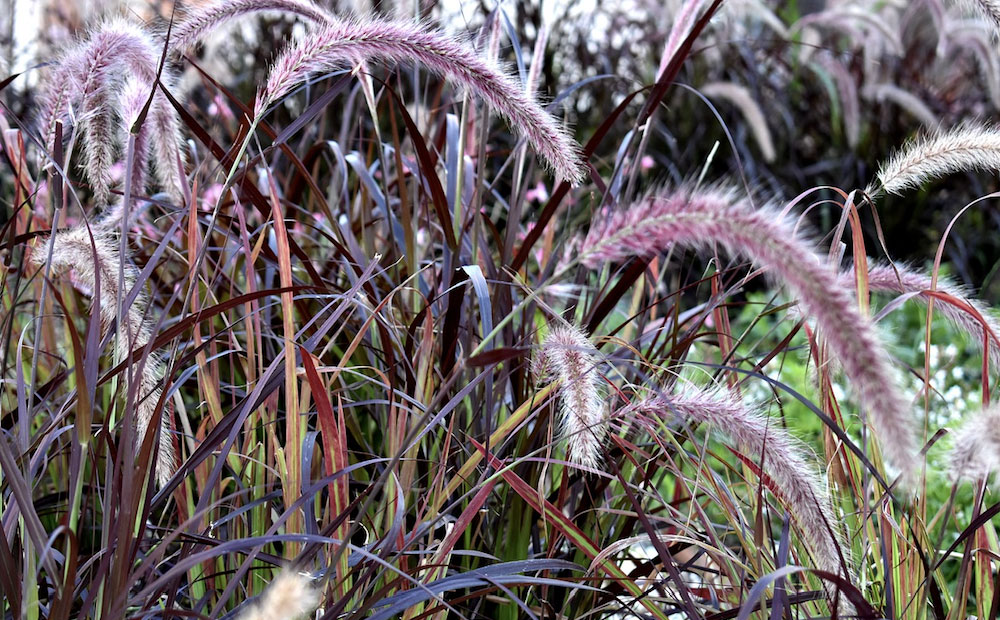
Exotic Ornamental Grasses for the Landscape
Some particularly eye-catching varieties of ornamental grasses have been brought over from across the pond, usually from Asia. Despite coming from the opposite end of the earth, they’re still usually quite hardy and well-adapted to our climates, and the interesting colors and textures they bring to the landscape are pretty fabulous.
- Purple Fountain Grass: Many people overlook using annual grasses in their spring containers. As the name suggests, this funky purple ornamental grass spills out like a fountain. It has fuzzy, wispy plumes that look like kind of like cat-tails that dance around in the breeze. This fountain grass usually grows up to 3-5 feet high and spreads 2-4 feet wide. It isn’t an overly aggressive grower, so it’s great to mix into the garden. It also looks awesome as part of a mixed container arrangement. Its a tender perennial, only hardy to zone 9— but it’s such a lovely garden addition it’s worth treating as an annual.
- Ravenna Grass:This exotic grass is sometimes used as a substitute for Pampas Grass in northern climates. Pampas Grass, with its breathtaking, dramatic tufts, is quite popular in southern regions, but it’s not hardy to our colder St. John climate. Luckily, Ravenna Grass is a great alternative that can survive in Zone 5. It can grow pretty huge (up to 13 feet tall!), so it’s definitely suited to larger spaces in the landscape.
- Blue Sedge: For a smaller ornamental grass that’s nice and rounded and doesn’t spread too aggressively, blue sedge is a fantastic option. It usually doesn’t exceed 8 inches high and 12 inches wide, it’s pretty much evergreen, and it will stick around for as long as 10 years!
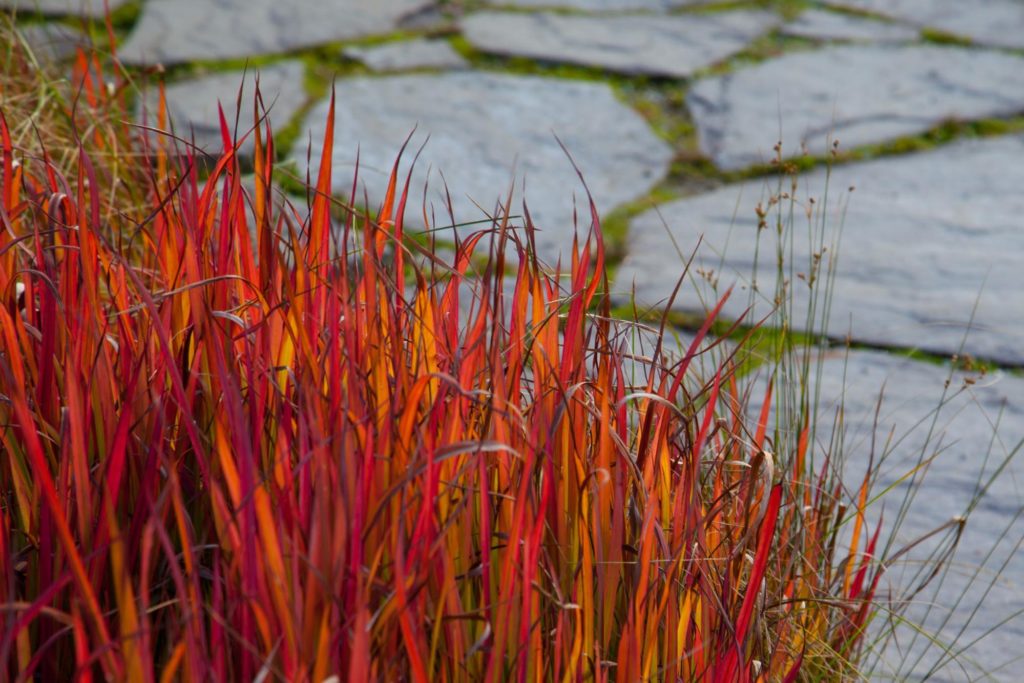
- Japanese Silver Grass: Watching the colors of this ornamental grass change with the seasons is always a delight. It’s particularly attractive in winter, when its feathery tufts and tall blades of foliage lighten to a shiny, silvery tone. There are several varieties of Japanese Silver Grass in all different sizes and colors, so whether you want one for the flower garden, as a border plant, or in a container arrangement, you’re bound to find one that suits your design. Look for varieties with beautiful variegation for additional garden interest.
- Japanese Blood Grass: We love the explosion of color this jewel-toned ornamental grass creates. It’s a vibrant emerald green at the base, with ruby red tips that get brighter and richer the longer they’re out in the bright summer sun. It doesn’t spread too wildly— rather, it has more of a clumping growth habit, and reaches 2 feet tall. This modest height makes it a great edging plant for paths and garden borders. It will do best in cooler, more moist locations, but make sure the soil has proper drainage to avoid root rot.

Ornamental grasses are anything but boring— their dramatic displays of tall, sword-like foliage and fluffy, feathery tufts are always sure to grab people’s attention. If you’re considering adding some grass plants to your landscape, visit us at Alsip and one of our experts will be happy to guide you through selecting the best ornamental grasses for your home.
